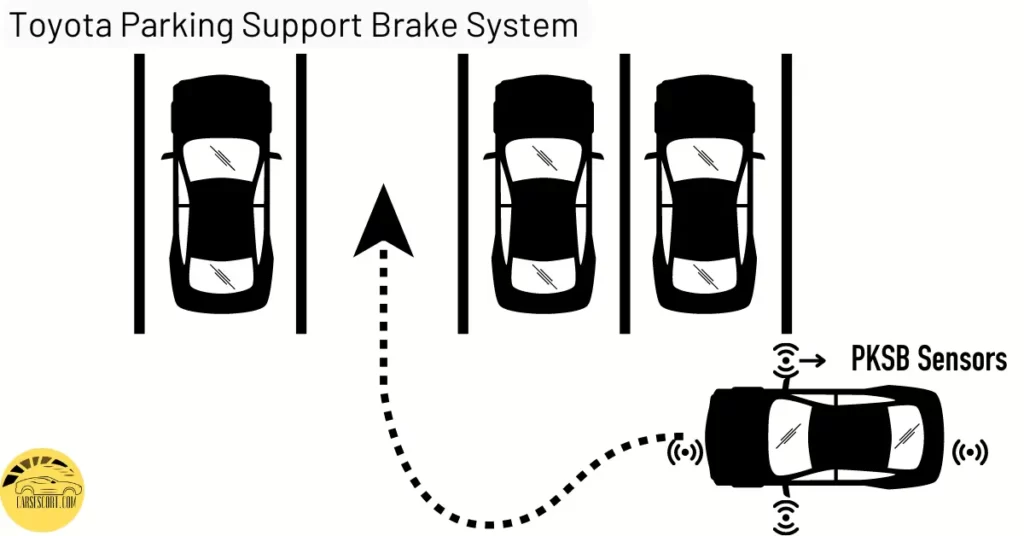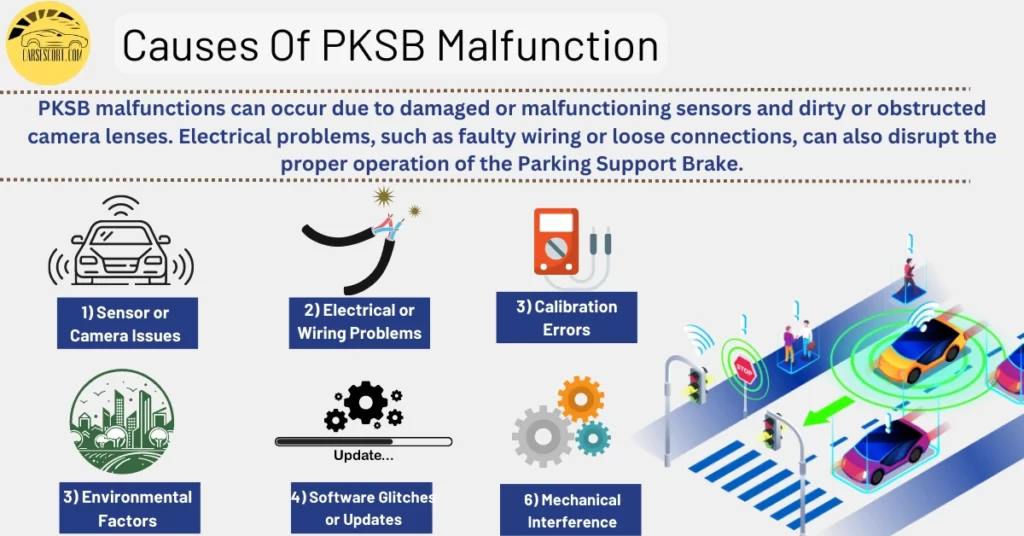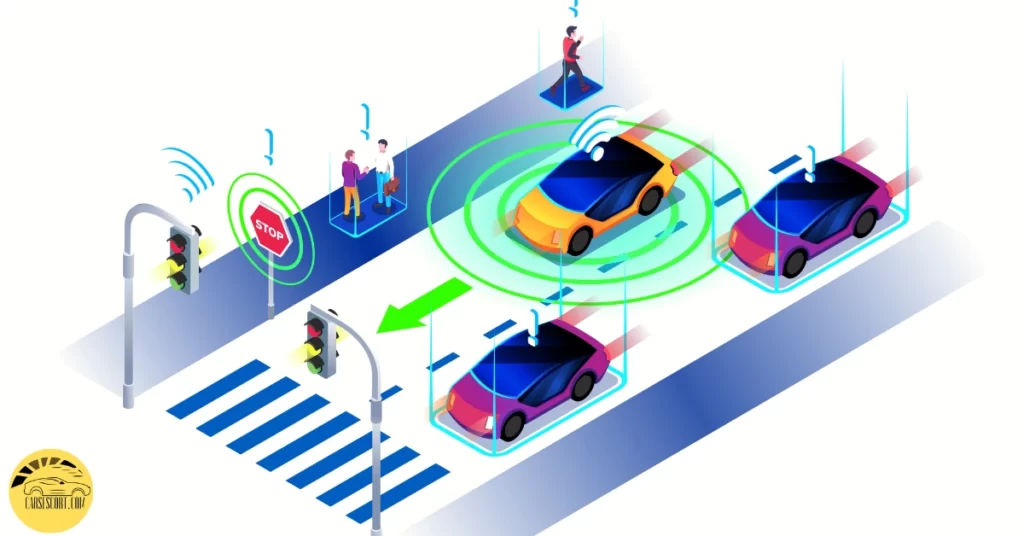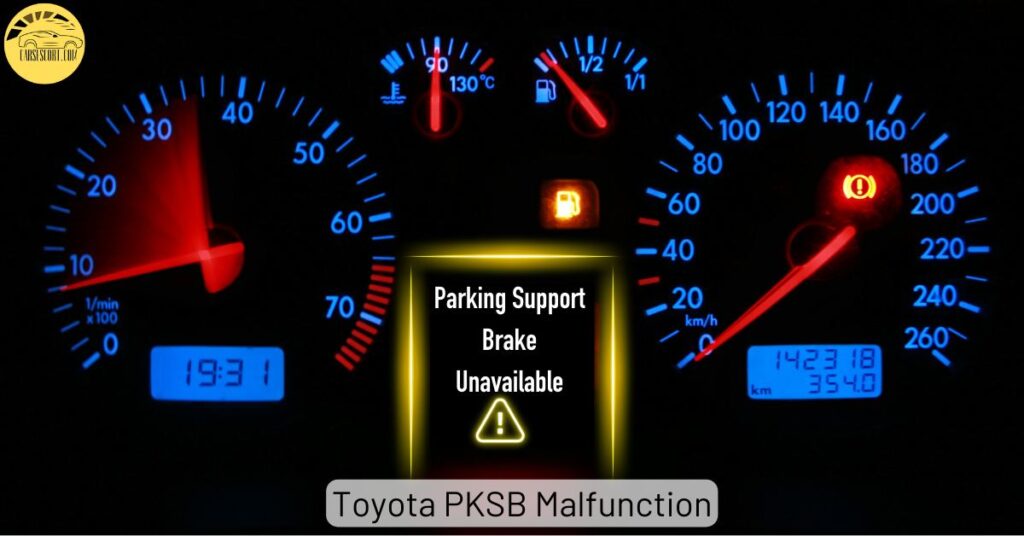In the fast-paced world of automotive innovation, safety features have become paramount. The Toyota Parking Support Brake (PKSB) is a groundbreaking technology designed to enhance driver confidence and prevent collisions.
However, when a malfunction occurs within this crucial system, it can instill a sense of unease and raise questions about the reliability of advanced driver-assistance features.
PKSB malfunction can occur due to damaged or malfunctioning sensors and dirty or obstructed camera lenses. Electrical problems, such as faulty wiring or loose connections, can also disrupt the proper operation of the Parking Support Brake.
However, some other reasons can also cause issues with the Toyota PKSB system that must be addressed soon to avoid any complications.
This blog post is an ultimate guide. Keep Reading.
What is Toyota Parking Support Brake?

Parking Support Brake, Parking Assist Brake, or Parking Collision Avoidance Assist (PCA) is an advanced safety feature in some modern vehicles. It is designed to help drivers avoid collisions while parking or maneuvering in tight spaces.
In Toyota highlander, Prius, Mirai, and some other advanced models, Parking Support Brake utilizes a combination of sensors, cameras, and other detection systems to detect objects or obstacles in the vehicle’s path when parking or performing low-speed maneuvers.
When the PKSB system detects a potential collision, it provides visual and audible warnings to alert the driver. If the driver fails to respond immediately and the collision is imminent, the system can automatically apply the vehicle’s brakes to help avoid or mitigate the impact.
The primary purpose of the Parking Support Brake (PKSB) is to enhance the safety of parking and low-speed maneuvering by assisting the driver in situations where visibility may be limited, or the driver may be unaware of nearby objects.
It can be particularly useful in crowded urban environments, tight parking spaces, or backing up.
Causes of PKSB Malfunction

1) Sensor or Camera Issues
The parking Support Brake relies on sensors and cameras to detect obstacles and provide accurate information to the system. If any of these components are damaged, dirty, or malfunctioning, it can result in incorrect readings or a complete system failure that lead to PKSB malfunction .
2) Electrical or Wiring Problems
The Parking Support Brake system uses electrical connections and wiring to function correctly. Faulty wiring, loose connections, or issues with the electrical system can lead to malfunctions or intermittent operation of the system.
3) Calibration Errors
Proper calibration of the sensors and cameras is crucial for the accurate functioning of the Parking Support Brake. If the system is not calibrated correctly or there are any calibration drifts over time, it can lead to false readings or failure to detect obstacles.
4) Environmental Factors
Adverse weather conditions such as heavy rain, snow, or fog can interfere with the operation of the sensors and cameras, affecting the performance of the Parking Support Brake.
Dirt, mud, or debris on the PKSB sensors or camera lenses can obstruct their view and cause malfunctions.
5) Software Glitches or Updates
Parking Support Brake relies on software to interpret sensor data and make decisions like any computer-based system. Software glitches, bugs, or incompatibility issues can result in malfunctions.
Similarly, if the vehicle’s software is not up to date or there are compatibility issues with the system’s software, it can malfunction.
6) Mechanical Interference
Physical obstructions, such as objects or debris blocking the sensors or cameras, can prevent the Parking Support Brake system from detecting obstacles accurately.
Similarly, any damage or misalignment to the braking system can affect the system’s ability to apply the brakes when needed and trigger PKSB malfunction .
You May Also Like To Read:
How To Fix Parking Support Brake (PKSB Malfunction)?
1) Restart the Vehicle
Begin by turning off the engine and restarting the vehicle. Sometimes, a temporary glitch or software error can cause the error message to appear. Restarting the vehicle may reset the system and clear the error.
2) Check for Obstructions
Ensure no physical obstructions or debris on the sensors or camera lenses. Clean them carefully if necessary, as dirt or debris can interfere with the system’s functionality.
3) Verify Calibration
If the error persists, it is worth checking if the sensors and cameras are correctly calibrated. Refer to the vehicle’s manual for instructions on calibrating the Parking Support Brake system. Follow the steps carefully to ensure accurate calibration.
4) Inspect Wiring and Connections
Check the wiring and connections related to the Parking Support Brake system. Look for any loose connections, damaged wires, or signs of corrosion.
Secure or repair any issues found, as faulty electrical connections can cause malfunctions.
5) Update Software
Check if any software updates are available for the vehicle’s system. Visit the manufacturer’s website or contact customer support to obtain the latest software version. Software updates can resolve any known bugs or compatibility issues causing the error.
6) Reset the ECU
If you notice that the parking support brake is unavailable on your car dashboard before taking your vehicle to the mechanic, resetting your vehicle’s engine control unit (ECU) is a potential solution.
Resetting the ECU can often resolve minor glitches or malfunctions in various vehicle systems, including the parking support brake. This process helps to recalibrate the electronic components and restore them to their default settings.
7) Consult a Professional Mechanic
If the above steps do not resolve the PKSB light flashing issue, it is recommended to consult with a qualified technician or contact the vehicle manufacturer’s customer support.
They will have specialized knowledge and diagnostic tools to investigate the problem further and provide appropriate solutions.

PKSB Sensor Location
The parking support brake in a Toyota car is typically located all around the front and back of the Toyota vehicle or near the center console area, close to the gear shifter.
However, it’s important to note that different Toyota models may have slightly different configurations, so the exact location of the parking support brake may vary.
To be certain, it’s always best to refer to the owner’s manual of the specific Toyota model you are referring to for accurate information on locating the parking support brake.
Toyota Models More Prone To Parking Support Brake Malfunction
- Toyota highlander
- Toyota prius
- Toyota Yaris
- Toyota Camry
- Toyota Rav4
- Toyota Corolla
- Toyota Lexus
- Toyota Sienna
FAQ
What is the brake malfunction light on a Toyota?
The brake malfunction light on a Toyota is a warning indicator that illuminates the dashboard to alert the driver of a potential issue with the braking system. It typically signifies a problem with the vehicle’s hydraulic brake system, such as low brake fluid levels, a malfunctioning brake master cylinder, a brake fluid leak, or a fault in the anti-lock braking system (ABS).
When the brake malfunction light is illuminated, it is crucial to address the issue promptly to ensure the vehicle’s safe operation.
Can you drive with a parking brake fault?
As for driving with a parking brake fault, it is generally not advisable. The parking brake, also known as the emergency brake or handbrake, is a backup system to prevent the vehicle from moving while parked. If there is a fault with the parking brake, it may not function correctly, compromising the vehicle’s safety.
It is best to have the parking brake fault inspected and repaired by a qualified mechanic before driving the vehicle to ensure optimal safety on the road.
Affiliate Disclosure: Cars Escort is a participant in the Amazon Services LLC Associates Program. As an Amazon Associate, we earn from qualifying purchases made through affiliate links on our site. Read Our Disclaimer .

